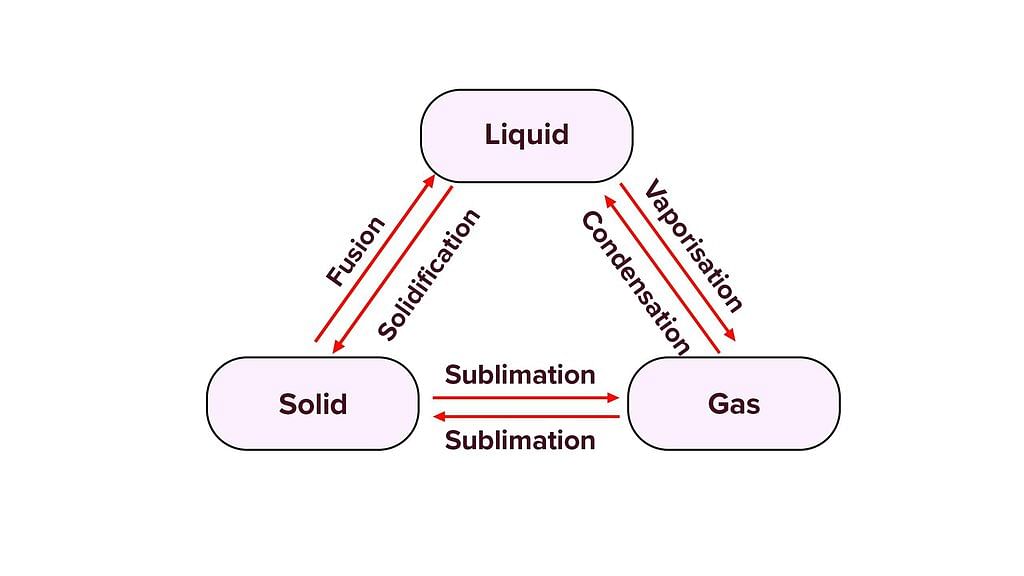Class 9 Exam > Class 9 Tests > Science Class 9 > Test: Matter In Our Surroundings - 2 - Class 9 MCQ
Test: Matter In Our Surroundings - 2 - Class 9 MCQ
Test Description
15 Questions MCQ Test Science Class 9 - Test: Matter In Our Surroundings - 2
Test: Matter In Our Surroundings - 2 for Class 9 2025 is part of Science Class 9 preparation. The Test: Matter In Our Surroundings - 2 questions and answers have been
prepared according to the Class 9 exam syllabus.The Test: Matter In Our Surroundings - 2 MCQs are made for Class 9 2025 Exam. Find important
definitions, questions, notes, meanings, examples, exercises, MCQs and online tests for Test: Matter In Our Surroundings - 2 below.
Solutions of Test: Matter In Our Surroundings - 2 questions in English are available as part of our Science Class 9 for Class 9 & Test: Matter In Our Surroundings - 2 solutions in
Hindi for Science Class 9 course. Download more important topics, notes, lectures and mock
test series for Class 9 Exam by signing up for free. Attempt Test: Matter In Our Surroundings - 2 | 15 questions in 20 minutes | Mock test for Class 9 preparation | Free important questions MCQ to study Science Class 9 for Class 9 Exam | Download free PDF with solutions
Test: Matter In Our Surroundings - 2 - Question 1
Which of the following statements is incorrect?
Detailed Solution for Test: Matter In Our Surroundings - 2 - Question 1
Test: Matter In Our Surroundings - 2 - Question 2
On converting 25°C, 38°C and 66°C to Kelvin scale, the correct sequence of temperature will be
Detailed Solution for Test: Matter In Our Surroundings - 2 - Question 2
Test: Matter In Our Surroundings - 2 - Question 3
Shivam visited an LPG unit and found that the gas can be liquified at specific conditions of temperature and pressure. Help him to identify the correct set of conditions.
Detailed Solution for Test: Matter In Our Surroundings - 2 - Question 3
Test: Matter In Our Surroundings - 2 - Question 4
The property to flow is unique to fluids. Which one of the following statements is correct?
Detailed Solution for Test: Matter In Our Surroundings - 2 - Question 4
Test: Matter In Our Surroundings - 2 - Question 5
Which of the following is correct order of forces of attraction?
Detailed Solution for Test: Matter In Our Surroundings - 2 - Question 5
Test: Matter In Our Surroundings - 2 - Question 6
Which condition out of the following will increase the evaporation of water?
Detailed Solution for Test: Matter In Our Surroundings - 2 - Question 6
Test: Matter In Our Surroundings - 2 - Question 7
Choose the correct statement out of the following.
Detailed Solution for Test: Matter In Our Surroundings - 2 - Question 7
Test: Matter In Our Surroundings - 2 - Question 8
Which one of the following sets of phenomenon would increase on raising the temperature?
Detailed Solution for Test: Matter In Our Surroundings - 2 - Question 8
Detailed Solution for Test: Matter In Our Surroundings - 2 - Question 9
Detailed Solution for Test: Matter In Our Surroundings - 2 - Question 10
Test: Matter In Our Surroundings - 2 - Question 11
Which of the following does not undergo sublimation?
Detailed Solution for Test: Matter In Our Surroundings - 2 - Question 11
Detailed Solution for Test: Matter In Our Surroundings - 2 - Question 12
Detailed Solution for Test: Matter In Our Surroundings - 2 - Question 13
Test: Matter In Our Surroundings - 2 - Question 14
Which process involves the transformation of gas directly into a solid?
Detailed Solution for Test: Matter In Our Surroundings - 2 - Question 14
Test: Matter In Our Surroundings - 2 - Question 15
What effect does increasing temperature have on the kinetic energy of particles?
Detailed Solution for Test: Matter In Our Surroundings - 2 - Question 15
|
88 videos|369 docs|67 tests
|
Information about Test: Matter In Our Surroundings - 2 Page
In this test you can find the Exam questions for Test: Matter In Our Surroundings - 2 solved & explained in the simplest way possible.
Besides giving Questions and answers for Test: Matter In Our Surroundings - 2, EduRev gives you an ample number of Online tests for practice



















